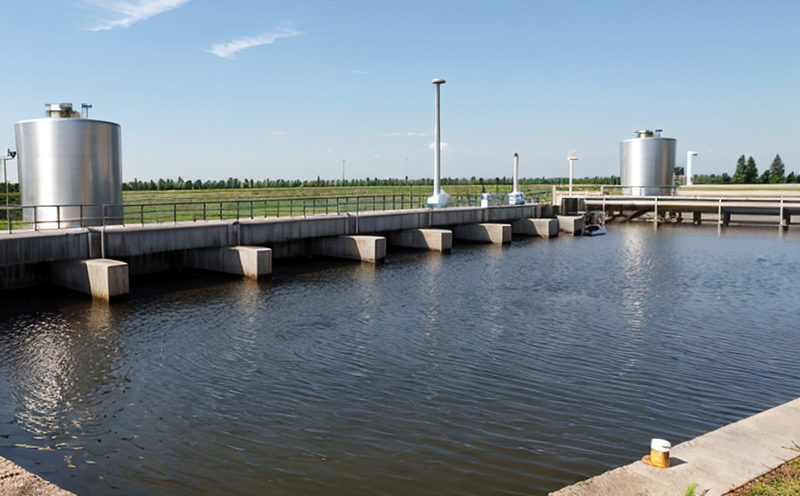EN ISO 5667-1 Guidance on Water Sampling for Microbiology
The EN ISO 5667-1 standard provides comprehensive guidance on the sampling procedures and methodologies required to ensure accurate microbiological analysis of water samples. This service is essential for quality managers, compliance officers, R&D engineers, and procurement teams who need reliable data for environmental monitoring and regulatory compliance.
The standard covers various aspects including the selection of appropriate sampling devices, the use of proper containers, and the preservation techniques to minimize contamination during sample collection. It also provides detailed instructions on how to handle samples post-collection to ensure they remain representative of the water body being sampled.
Sampling is a critical step in microbiological testing because improper handling can lead to biased results that do not accurately reflect the true microbial content present in the water. This can have serious implications for public health, environmental impact assessments, and compliance with various regulatory standards such as those set by the World Health Organization (WHO) and the European Union.
Compliance with EN ISO 5667-1 ensures that samples are collected under controlled conditions, which enhances data reliability. This is particularly important in sectors like water treatment facilities, wastewater management, and environmental monitoring where accurate data can influence strategic decisions regarding operational efficiency and resource allocation.
The standard also emphasizes the importance of sampling frequency based on risk assessment and expected microbial load. For instance, samples from high-risk areas or during periods of potential contamination should be collected more frequently to ensure timely detection and response.
Sampling methods vary depending on the type of water being sampled (surface water, drinking water, wastewater) and the specific parameters of interest such as total coliforms, fecal indicators, pathogens, or other relevant microorganisms. Each method requires careful consideration of factors like temperature, pH levels, and contact time with the sample.
Proper sampling techniques are crucial not only for accurate microbiological testing but also to support robust decision-making processes in water management. By adhering to EN ISO 5667-1 guidelines, organizations can ensure that their sampling practices are consistent with international best practices and contribute to a higher level of trustworthiness in the results generated.
| Sampling Method | Description | Application Example |
|---|---|---|
| Bottle Sampling | Using a sterile bottle to collect water from a specified depth. | Sampling for total coliforms in drinking water sources. |
| Riser Probe | A device that collects samples at different depths within a body of water. | Monitoring temperature gradients and microbial distribution in lakes or reservoirs. |
| Discrete Sampling | Taking single, representative samples from multiple locations simultaneously. | Assessing microbial diversity across different sections of a river. |
Environmental and Sustainability Contributions
The practice of accurate water sampling as guided by EN ISO 5667-1 plays a pivotal role in environmental sustainability efforts. By ensuring that samples are collected correctly, organizations can contribute to the reduction of waterborne diseases, improved water quality, and better management of aquatic ecosystems.
Accurate microbiological testing helps identify potential sources of contamination early on, allowing for quicker interventions which can prevent widespread health issues. This is particularly important in regions where access to clean water is a critical challenge. The data generated from these tests can inform policy decisions aimed at improving sanitation infrastructure and promoting sustainable practices.
Furthermore, compliance with international standards like EN ISO 5667-1 demonstrates an organization’s commitment to ethical business practices and responsible stewardship of natural resources. This not only enhances corporate reputation but also fosters community trust, which is vital for long-term success in the water sector.
The results from microbiological testing can be used to benchmark performance against industry standards and identify areas for improvement. This continuous monitoring and evaluation contribute to more efficient use of resources and reduced environmental impact. For instance, identifying high-risk zones early through targeted sampling allows for more effective resource allocation towards mitigating risks.
Organizations that adopt these practices also set an example for others in the industry, encouraging a culture of sustainability across the sector. This collective effort is essential for achieving global goals related to clean water and sanitation as outlined by the United Nations Sustainable Development Goals (SDGs).
Competitive Advantage and Market Impact
- Enhanced Compliance: Ensuring full compliance with EN ISO 5667-1 can help organizations avoid costly penalties associated with non-compliance.
- Informed Decision Making: Accurate microbiological data enables more informed decisions on water treatment processes and resource allocation.
- Improved Reputation: Demonstrating a commitment to high standards of testing enhances an organization’s reputation, attracting both customers and investors.
- Prompt Responses: Early detection of contamination allows for swift corrective actions, minimizing disruptions and potential damage.
Use Cases and Application Examples
The application of EN ISO 5667-1 is wide-ranging and includes numerous use cases across different sectors:
| Use Case | Description |
|---|---|
| Drinking Water Quality Monitoring | Ensure that drinking water meets all microbial safety standards. |
| Wastewater Treatment Monitoring | Evaluate the effectiveness of wastewater treatment processes and ensure compliance with regulatory limits. |
| Aquatic Ecosystem Health Assessment | Determine the health status of aquatic ecosystems by assessing microbial indicators. |





